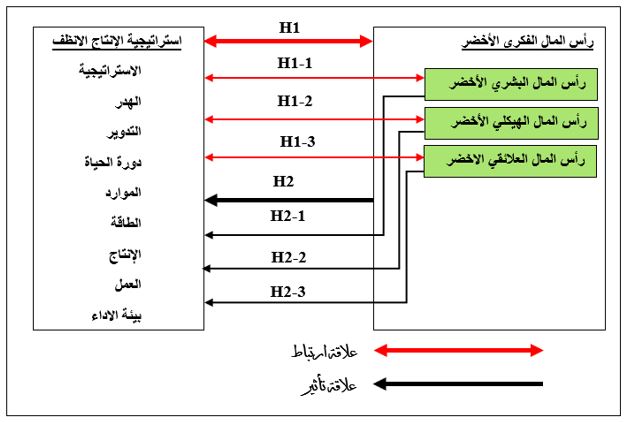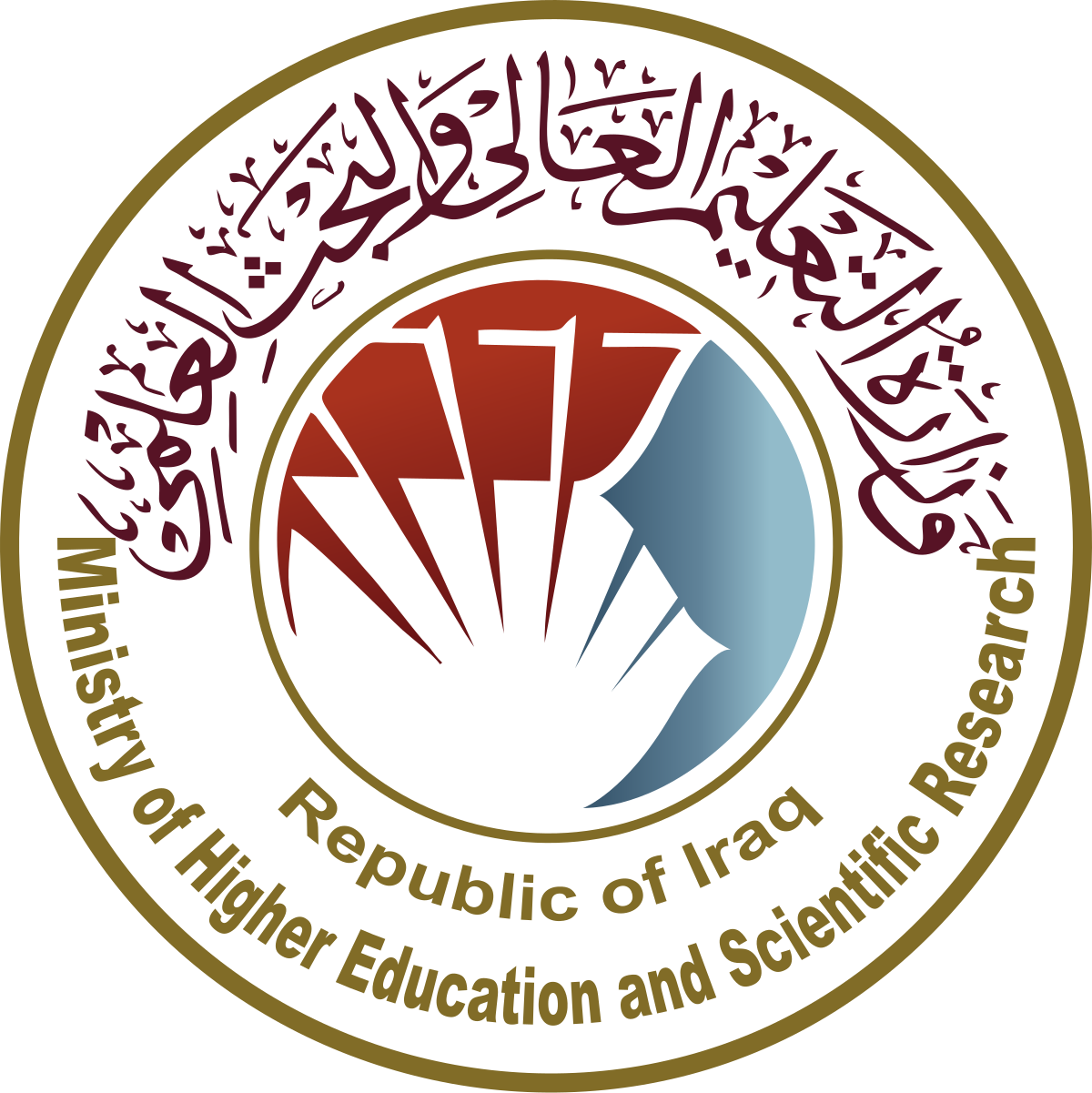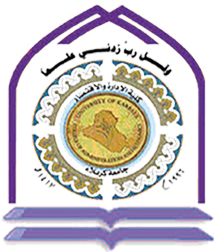The Role of Green Intellectual Capital in Promoting Cleaner Production Strategy
DOI:
https://doi.org/10.71207/ijas.v21i83.3181Keywords:
Green intellectual capital, green human capital, green structural capital, green relational capital, cleaner production strategy.Abstract
The current study aimed to explore the impact of green intellectual capital on the cleaner production strategy. The study relied on the questionnaire as a primary tool for collecting data and information about the study community represented by a sample (275), which was represented by the workers in the Union Food Industries Company/Babil. The analysis and statistical processing were based on the SPSS and Amos programs (exploratory and confirmatory factor analysis, as basic structural tests for the validity of the adopted measures. The research relied on the descriptive analytical approach). Based on the study problem represented in knowing the strength of the influence between the research variables and their hypotheses, the researcher reached a set of conclusions, the most prominent of which was that the cleaner production strategy is a commitment by the business organization to environmental standards that lead to a gradual reduction in the amount of pollutants and avoiding penalties and fines imposed by governments due to pollution caused by the organization, in addition to improving the organization's relationship with the parties and organizations concerned with the environment and society. Green intellectual capital helps greatly in overcoming environmental crises, and the sustainable supply chain contributes to reducing energy and reducing industrial waste.
Downloads
References
ربيع, عادل مشعـــــــــان, (2011)، التوعية البيئية, مكتبــــــة المجمـــــع العربي للنشر و التوزيع, عمان, الطبعة الأولى, الاردن.
قطب، بدوي (2014)، الإنتاج الأنظف، مجلة إخبار النفط والغاز، العدد، 473، وزارة الطاقة، الإمارات العربية المتحدة.
مخلف، عارف صالح، (2009)، الادارة البيئية الحماية الإدارية للبيئة، الطبعة الأولى، دار اليازوري العلمية للنشر والتوزيع، عمان، الأردن.
Abbas, A. A. (2022). The role of organizational virtuousness in reinforcement proactive work behavior. Management of Organizations: Systematic Research, 87(1), 1-20.
Abbas, A. A., & Al Hasnawi, H. H. (2021). The impact of environmental leadership on entrepreneurial success: The moderating role of green organizational behavior. Jurnal Pengurusan, 63, 1-15.
Abbas, A. A., & Ali, R. H. A. (2023, April). College students' perceptions of environmental sustainability and its impact on environmental citizenship. In AIP Conference Proceedings (Vol. 2776, No. 1). AIP Publishing.
Al Issa, H. E., Abdullatif, T. N., Ntayi, J., & Abdelsalam, M. K. (2023). Green intellectual capital for sustainable healthcare: evidence from Iraq. Journal of Intellectual Capital, 24(4), 929-947.
Al-Humairi, S. K. O., Abd, A. M. F., & Abbas, A. A. (2024). The impact of cleaner production strategy on Sustainable supply chain performance. Production Engineering Archives, 30.
Almeida, C. M., Agostinho, F., Huisingh, D., & Giannetti, B. F. (2017). Cleaner Production towards a sustainable transition. Journal of Cleaner Production, 142, 1-7.
Arie, A. A. P. G. B., Kumalasari, P. D., & Manuari, I. A. R. (2019). The role of green intellectual capital on competitive advantage: evidence from Balinese financial institution. Sriwijaya international journal of dynamic economics and business, 227-242.
Arnett, D. B., Sandvik, I. L., & Sandvik, K. (2018). Two paths to organizational effectiveness–Product advantage and life-cycle flexibility. Journal of Business Research, 84, 285-292.
Astuti, P., & Datrini, L. (2021). Green competitive advantage: Examining the role of environmental consciousness and green intellectual capital. Management Science Letters, 11(4), 1141-1152.
Baloch, Q. B., Maher, S., Iqbal, N., Shah, S. N., Sheeraz, M., Raheem, F., & Khan, K. I. (2022). Role of organizational environment in sustained organizational economic performance. Business Process Management Journal, 28(1), 131-149.
Boon, C., Eckardt, R., Lepak, D. P., & Boselie, P. (2018). Integrating strategic human capital and strategic human resource management. The International Journal of Human Resource Management, 29(1), 34-67.
Chaudhry, N. I., Bilal, A., Awan, M. U., & Bashir, A. (2016). The role of environmental consciousness, green intellectual capital management and competitive advantage on financial performance of the firms: an evidence from manufacturing sector of Pakistan. Journal of Quality and Technology Management, 13(II), 51-70.
Chen, Y. S. (2008). The positive effect of green intellectual capital on competitive advantages of firms. Journal of business ethics, 77, 271-286.
Delgado-Verde, M., Amores-Salvadó, J., Martín-de Castro, G., & Navas-López, J. E. (2014). Green intellectual capital and environmental product innovation: the mediating role of green social capital. Knowledge Management Research & Practice, 12(3), 261-275.
Dewberry, C. (2004). Statistical methods for organizational research: Theory and practice. Routledge.
Dong, L., Tong, X., Li, X., Zhou, J., Wang, S., & Liu, B. (2019). Some developments and new insights of environmental problems and deep mining strategy for cleaner production in mines. Journal of Cleaner Production, 210, 1562-1578.
Erosa, A., Koreshkova, T., & Restuccia, D. (2010). How important is human capital? A quantitative theory assessment of world income inequality. The review of economic studies, 77(4), 1421-1449.
Febrianti, F. D., Sugiyanto, S., & Fitria, J. R. (2020). Green Intellectual Capital Conservatism Earning Management, To Future Stock Return As Moderating Stock Return (Study Of Mining Companies In Indonesia Listed On Idx For The Period Of 2014-2019). The Accounting Journal Of Binaniaga, 5(2), 141-154.
Fitri, A., Diamastuti, E., Romadhon, F., & Maharani, H. (2022). The Effect of Green Intellectual Capital on SMEs’ Business Sustainability. Jurnal Bisnis dan Manajemen, 9(1), 55-64.
Gao, F., Olayiwola, A. U., Liu, B., Wang, S., Du, H., Li, J., ... & Zhang, Y. (2022). Review of vanadium production part I: primary resources. Mineral Processing and Extractive Metallurgy Review, 43(4), 466-488.
Hraiga, R. A., Fadel, A. M. M. A., & Abbas, A. A. (2023). Balanced scorecard integration and green process re-engineering to optimize the performance of economic units. Economics, Management and Sustainability, 8(1), 16-33.
Hraiga, R. A., Muhammad Ali, A. M., & Abbas, A. A. (2023). Improving Productivity Using Green Process Reengineering Technology. Polish Journal of Environmental Studies, 32(5).
Khalili, N. R., Duecker, S., Ashton, W., & Chavez, F. (2015). From cleaner production to sustainable development: the role of academia. Journal of Cleaner Production, 96, 30-43.
Kong, E. (2017). The effect of structural capital for human capital development and management in social enterprises. In Organizational culture and behavior: Concepts, methodologies, tools, and applications (pp. 1442-1460). IGI Global.
Krejcie, R. V. (1970). Determining sample size for research activities. Educational Psychol Meas. 30, 607-610.
Liu, C. C. (2010, October). Developing green intellectual capital in companies by AHP. In 2010 8th International Conference on Supply Chain Management and Information (pp. 1-5). IEEE.
Manuti, A., Impedovo, M. A., & De Palma, P. D. (2017). Managing social and human capital in organizations: Communities of practices as strategic tools for individual and organizational development. Journal of workplace learning, 29(3), 217-234.
Matos, L. M., Anholon, R., da Silva, D., Ordoñez, R. E. C., Quelhas, O. L. G., Leal Filho, W., & de Santa-Eulalia, L. A. (2018). Implementation of cleaner production: A ten-year retrospective on benefits and difficulties found. Journal of Cleaner Production, 187, 409-420.
Nielsen, S. N. (2007). What has modern ecosystem theory to offer to cleaner production, industrial ecology and society? The views of an ecologist. Journal of Cleaner Production, 15(17), 1639-1653.
Osmani, M. (2012). Innovation in cleaner production through waste recycling in composites. Management of Environmental Quality: An International Journal, 24(1), 6-15.
Paoloni, M., Coluccia, D., Fontana, S., & Solimene, S. (2020). Knowledge management, intellectual capital and entrepreneurship: a structured literature review. Journal of Knowledge Management, 24(8), 1797-1818.
Rosak-Szyrocka, J., Clark, C. C., Abbas, A. A., & Ullah, I. (2020). The meaning of physical activity in the quality of life management aspect. In Conference Quality Production Improvement–CQPI (Vol. 2, No. 1, pp. 69-76).
Satyro, W. C., Contador, J. C., Monken, S. F. D. P., Lima, A. F. D., Soares Junior, G. G., Gomes, J. A., ... & Silva, L. S. (2023). Industry 4.0 implementation projects: the cleaner production strategy—a literature review. Sustainability, 15(3), 2161.
Saunders, M. (2009). Research methods for business students. Person Education Limited.
Severo, E. A., de Guimarães, J. C. F., Dorion, E. C. H., & Nodari, C. H. (2015). Cleaner production, environmental sustainability and organizational performance: an empirical study in the Brazilian Metal-Mechanic industry. Journal of Cleaner Production, 96, 118-125.
Solihin, S., Harnovinsah, H., Tugiantoro, T., & Karsam, K. (2023). Green Intellectual Capital And Sustained Competitive Advantages In The Industrial Sector Of Indonesia. Jurnal Reviu Akuntansi dan Keuangan, 13(1), 134-156.
Sudin, S., & Saad, Z. M. (2018). Linking Green Hrm And Green Intellectual Capital With Corporate Environmental Citizenship Behaviour. In N. Nadiah Ahmad, N. Raida Abd Rahman, E. Esa, F. Hanim Abdul Rauf, & W. Farhah (Eds.), Interdisciplinary Sustainability Perspectives: Engaging Enviromental, Cultural, Economic and Social Concerns, vol 44. European Proceedings of Social and Behavioural Sciences (pp. 419-4429).
Taha, I. M., & Abbas, A. A. (2023). The role of environmental monitoring in promoting green creativity. Economics and Business, 37(1), 15-36.
Tamhane, A. C. (2009). Statistical analysis of designed experiments: theory and applications (Vol. 609). John Wiley & Sons.
Umar, M., Ahmad, A., Sroufe, R., & Muhammad, Z. (2024). The nexus between green intellectual capital, blockchain technology, green manufacturing, and sustainable performance. Environmental Science and Pollution Research, 31(10), 15026-15038.
Vieira, L. C., & Amaral, F. G. (2016). Barriers and strategies applying Cleaner Production: a systematic review. Journal of Cleaner Production, 113, 5-16.
Walecka, A. (2021). The role of relational capital in anti-crisis measures undertaken by companies—conclusions from a case study. Sustainability, 13(2), 780.
Wicaksono, H., Belzner, T., & Ovtcharova, J. (2013, September). Efficient energy performance indicators for different level of production organizations in manufacturing companies. In IFIP International Conference on Advances in Production Management Systems (pp. 249-256). Berlin, Heidelberg: Springer Berlin Heidelberg.
Ye, J. L., Qin, X. W., Xie, W. W., Lu, H. L., Ma, B. J., Qiu, H. J., ... & Bian, H. (2020). The second natural gas hydrate production test in the South China Sea. China Geology, 3(2), 197-209.
Yong, J. Y., Yusliza, M. Y., Ramayah, T., & Fawehinmi, O. (2019). Nexus between green intellectual capital and green human resource management. Journal of cleaner production, 215, 364-374.
Żywiołek, J., Rosak-Szyrocka, J., & Abbas, A. A. (2022). Measuring the impact of the green supply chain on sustainable performance. HOLISTICA–Journal of Business and Public Administration, 13(1), 19-48.

Downloads
Published
How to Cite
Issue
Section
License
Copyright (c) 2025 College of Administration and Economics - University of Kerbala

This work is licensed under a Creative Commons Attribution-NonCommercial-NoDerivatives 4.0 International License.
Authors retain the copyright of their papers without restrictions.















